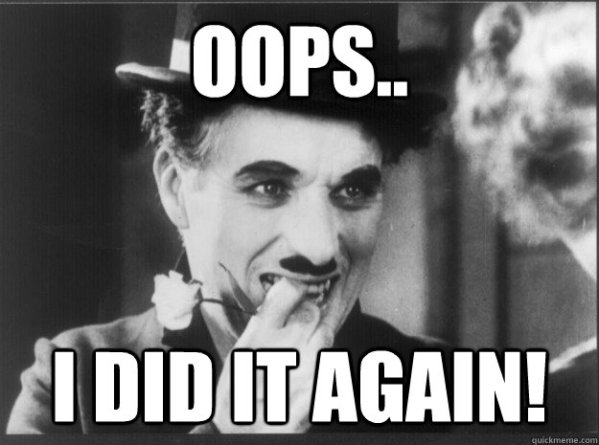
Graffiti from the Streets of Barcelona
Check this out – a second blog post in one month, that hasn’t happened for a while!
Since my last post I’ve been away to Barcelona, had a quick trip to Bournemouth University, been on hockey tour, attended a workshop on object handling and did my first bit of teaching to children! And in between doing the usual PhD work – so I’ve been busy!
First off Barcelona. It was beautiful. A lovely city with amazing architecture, history and somewhere I intend to visit again. My boyfriend and I went to celebrate his birthday and used it as a chance to get a break away from our work and spend some time with each other. It was absolutely lovely and perfect. We walked a lot but it was worth it to see so much of the city (plus it gave us the excuse to sit in many bars to have a rest and a drink!). We visited the typical tourist spots including La Rambla, Sagrada Familia and the Cathedral. Plus we wondered through the winding streets of the Gothic Quarter. It was incredible, especially Sagrada Familia. I honestly haven’t been in a building that was quite so spectacular! The design and architecture were stunning and the colours created by the stained glass windows were magnificent. I’m not a religious or particularly spiritual person but this was an awe-inspiring place! A must see if you are ever in Barcelona! It was a lovely few days, getting away and getting some head space – and of course the food was incredible! But it definitely reminded me that it’s important to take time for yourself and switch off from daily work life.
So what else? Oh yeah a brief to Bournemouth University to look at some Bronze Age juveniles. There were only a few individuals in their collection, but enough to complete my sample for this time period! This makes me very happy as it’s something tangible that I can tick off as ‘done’. It definitely helps towards the feeling of moving forward and making progress. Now to start looking at the data!
A good week of PhD work the occurred ending with a weekend away on hockey tour! Those who are not familiar with this is a weekend of playing social hockey (i.e. not that serious!) and meeting different players and clubs. It’s a great way to meet other people and to get to know the players on your team better. It was the first tour I’ve been on with Guildford hockey club and was a good laugh! I even saw a friend from Uni which was a lovely surprise. I bump into him randomly now and then so it was great having a catch up – the world of hockey can be a small place!
Moving to this week I’ve tried some new things! The first was attending a CDP (Collaborative Doctoral Partnership – my PhD funding scheme) workshop on object handling. This included going to the V&A (Victoria & Albert Museum) in London to discuss how people (including other CDP students and V&A staff) learn from objects within a collection. Part of the day included short presentations by CDP students about objects or collections involved in their research. Originally, I had not intended to go to the workshop but at the training days the other week I met the student organisers who asked me to present. I agreed and instead of discussing some of the skeletal collections or a particular object I took a different route – to discuss how attitudes towards excavation and reconstruction of human skulls has changed over time. In summary, during my PhD data collection, I came across particular collections (excavated during the late 1800s/early 1900s) that only consisted of skulls – almost all of which had been reconstructed. These reconstructions were made using troublesome materials, such as clay, metal and heavy glues, causing damage to the bones and preventing future research. This of course does not happen today. Guidelines produced by the British Museum and Department of Culture, Media and Sport now recommend excavation and conservation practices and state that conservation/reconstruction should only take place when necessary and by a trained professionals. It is interesting to consider how objects (including human remains) can be used to inform us just of past individuals or populations but also about the collectors and attitudes of the time. This was reflected and considered in talks by other students, as well as other common themes spanning different types of collections and objects. It was a very interesting session and a great chance to meet new people outside the world or bio-archaeaology! It was also great to gain more insight into attitudes of museums and how they look at objects. hopefully there will be more of these sessions in the future!
Finally, this week I had my first experience of teaching children. Yesterday I helped a friend who does some outreach within Southampton University. This included teaching classes 10 year-olds a little about archaeology and burials. Basically, the idea to get the kids to put together a small model of a skeleton then bury it with objects that may tell us about that person. It was quite fun and certainly a new experience for me! I’m glad that I get the chance to do some teaching, there’s a few more coming up next month so we’ll see how I get on then!
So over the last 3 weeks I’ve been quite busy. It’s all good though and I like the variety – it stops me getting stuck or bored!





 I’ve left it a while since writing a blog post! Sorry the PhD took over my life for a while there (a bit more than usual!).
I’ve left it a while since writing a blog post! Sorry the PhD took over my life for a while there (a bit more than usual!).